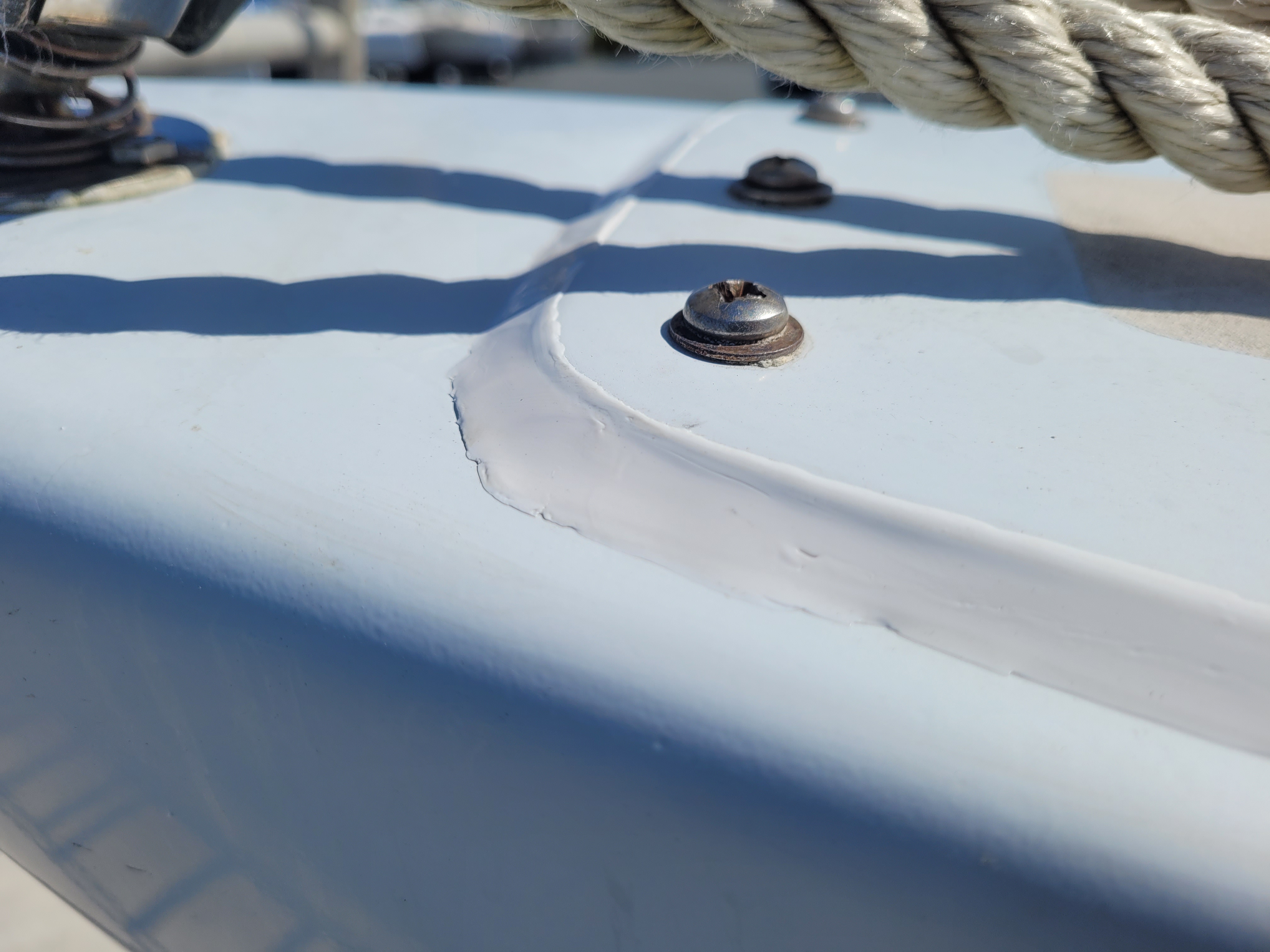Project: Cool It!


The Condor 40 came from the factory with a 12v fridge unit installed, but this one's had long since been removed. I'm guessing that at some point the 1980s fridge technology either broke, or was too inefficient compared to modern portable 12v fridges.
The prior owner, I think, used one of those bulky 12v portable fridges for his setup. It's not a boat with tons of interior space, though, so I decided to install a proper 12v fridge unit back into the icebox.
This was definitely one of those "do a bit of everything" projects. Electrical? Yes. Plumbing? A little. Careful mounting and routing of cables? Yes, lots.
It took me about a week. I'd say that was about 30% planning and figuring out where everything goes, 15% finding parts for the wiring and mounting, another 30% installing it all, and then the rest of that time spent testing and making sure the setup worked.
The model itself is an Isotherm model from 2010, new old stock, with what they call an "ISEC" computer attachment. It's not quite the new-style fridge thermostats with a digital display of internal temp, but the idea is it senses voltage and uses that to determine when the fridge should run overtime - so it's using more power when more power is available, and less when it's not - so it warms up a little overnight when the solar isn't putting any power out.
What went well: since the icebox had a fridge unit once upon a time, most of the hole-cutting and mounting points were already cut or obvious, so mounting and prep was easier than if it had never had a 12v cooler.

In the above photo, for example, all that had to be done was run the rest of that cooling tube over to the compressor side through the hole, then to fill that hole with expanding foam. A bit of painters tape sealed it well enough that I didn't need to trim messy foam or anything.
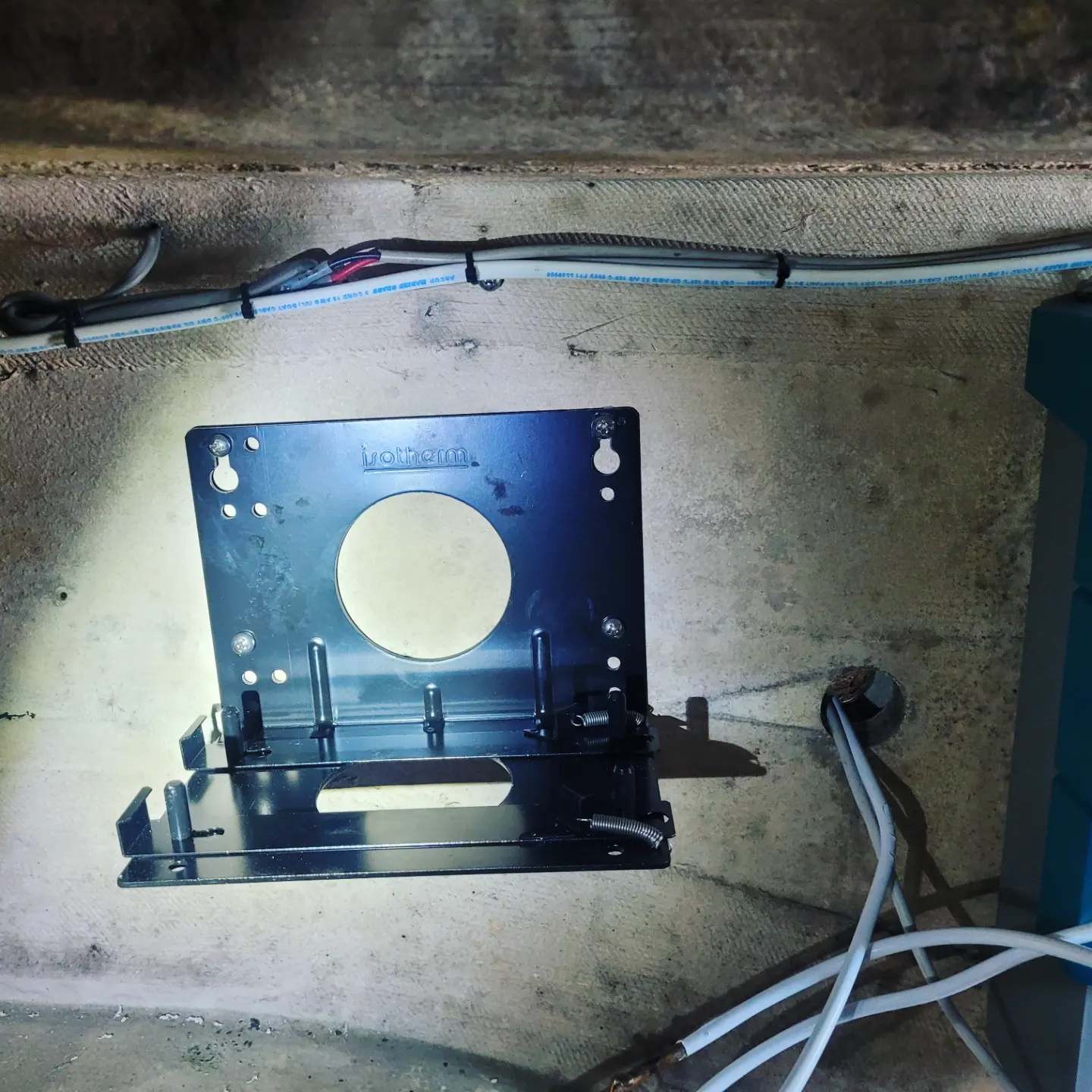

Likewise, where to mount the compressor was really obvious - it clearly used to be mounted there, and I could re-use most of the mounting holes. The only downside is this area is also in the aft "engine bay and head" area, so it's not as cool as is probably ideal especially if motoring. That big blue box is the ISEC unit, which just plugs into the electrical connectors on the compressor, a nice easy job.
What was tough: Wiring was a little complicated - it's a long run from the compressor mounting area over to the electrical bus-bars, and I had to free up a breaker too. The breaker panel, though, is nice and simple, but a lot has been run to way over-sized breakers. So, I moved the fans circuit over to share a breaker with the 12v interior lighting - since that's all LED now, I think a 15amp breaker is plenty for those two systems to share. It's not an ideal solution, but I think it's firmly in the "good enough" category.

(those busbars with all the red wires are great - it's all numbered, and refers over to which breaker on the electrical panel it connects to, so wiring the fridge was just a matter of running the wires, crimping in a fuse near the compressor, and putting it onto the right busbar connection for the fridge breaker)
The testing was difficult too. I picked up a little wireless temperature monitor made for an RV, which gives me both ambient and fridge temp - which is hugely useful. Now I can see live whether the fridge is cooling, how hot it is inside the boat, and how the two change throughout the day. But the ISEC unit means that the thermostat isn't exactly a "set to temperature and forget about it" setting, and it took a few weeks to really observe what temperatures were, and get it to a setting where the fridge stays cool but doesn't freeze everything in there.
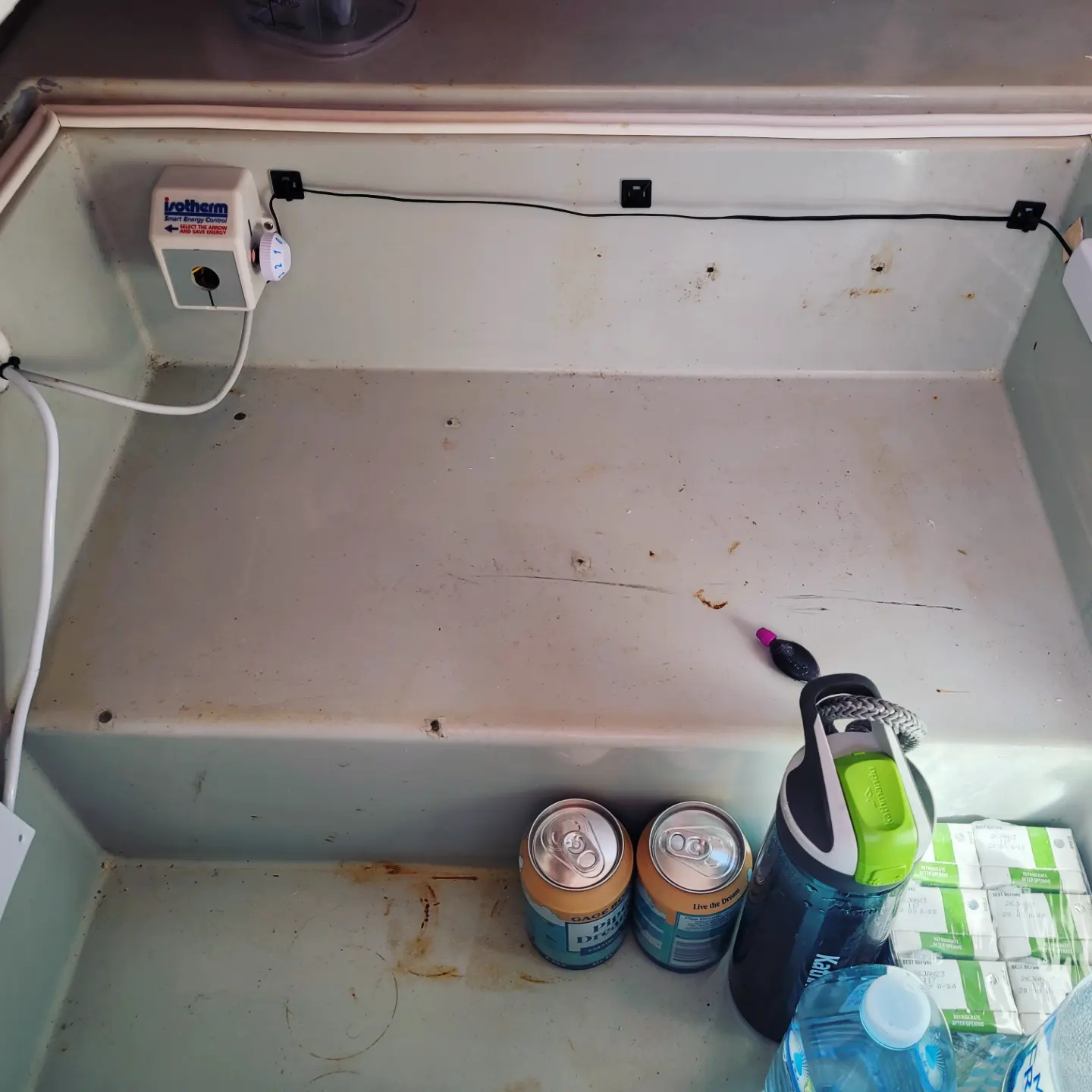

(it eventually got down to about 6 degrees celsius, and froze allllll my drinks in the lower part of the fridge. still tweaking it.)
Side projects: While working on the fridge, one of its big weak points is the cover isn't really insulated at all, and it had a broken handle:
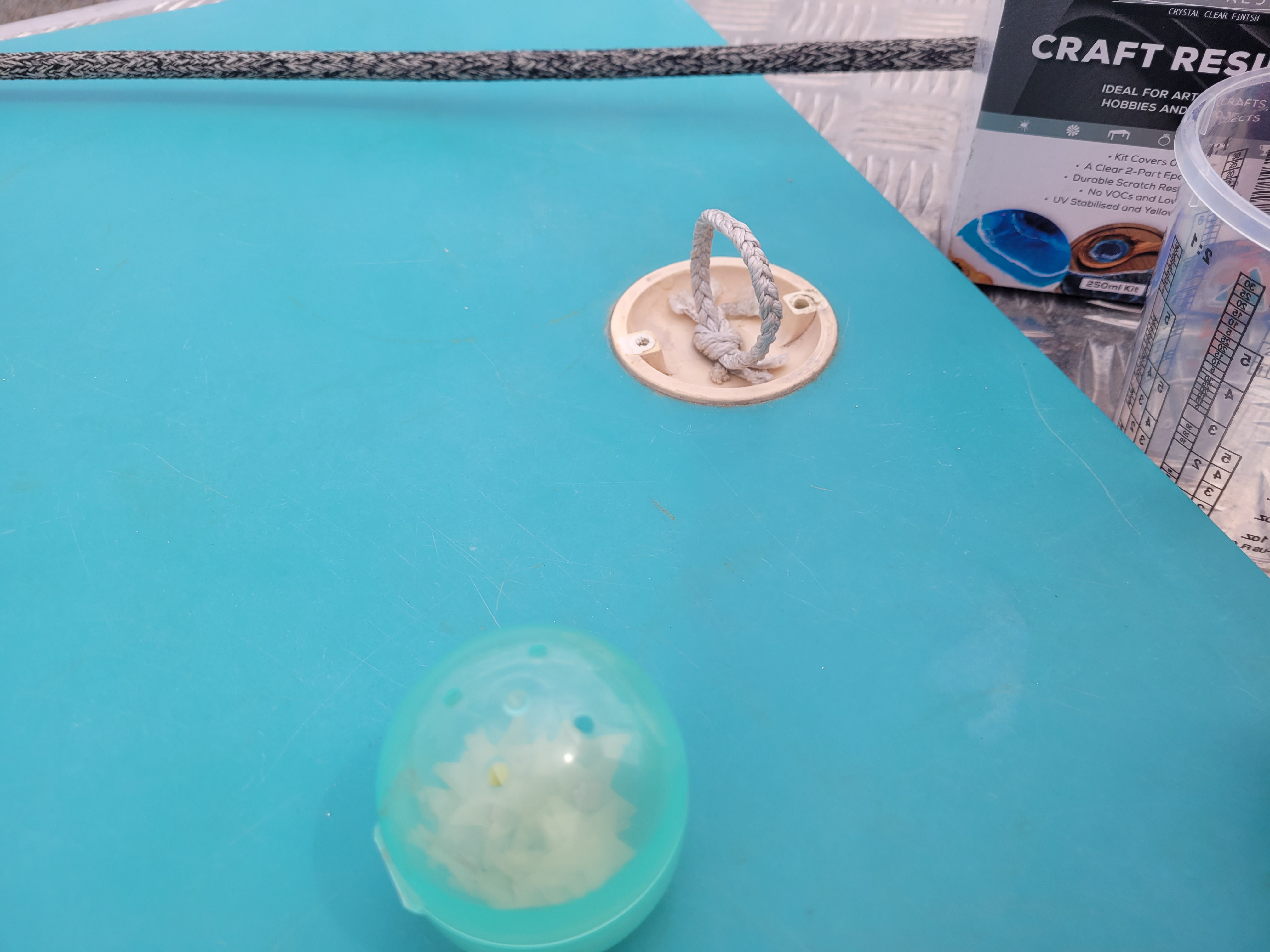
You can see the start of my fix for the handle above. I braided some dyneema lashing line, got some craft resin epoxy, and some fun glow-in-the-dark stars to give it some character. Then:
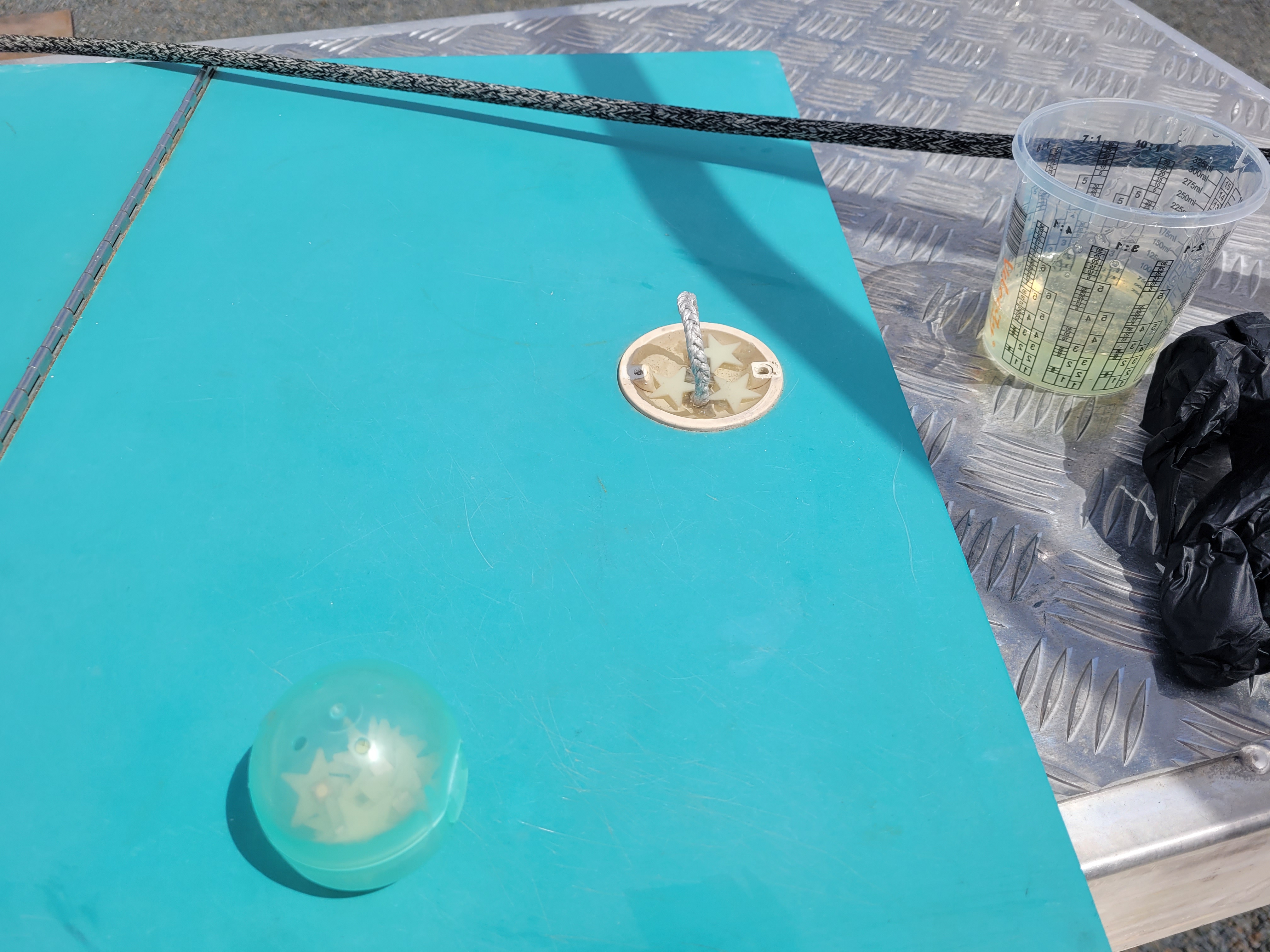
filled the old handle-recess with resin, propped the braided line up, and let it cure so I'd have a nice soft grab-handle. It's working great so far! I was a little nervous that the craft resin wouldn't grip well, but it feels very secure. I wouldn't fix a hull with it, but for this use it was perfect.
It still needs to get some bonus insulation, but overall I'm really happy with how it turned out:
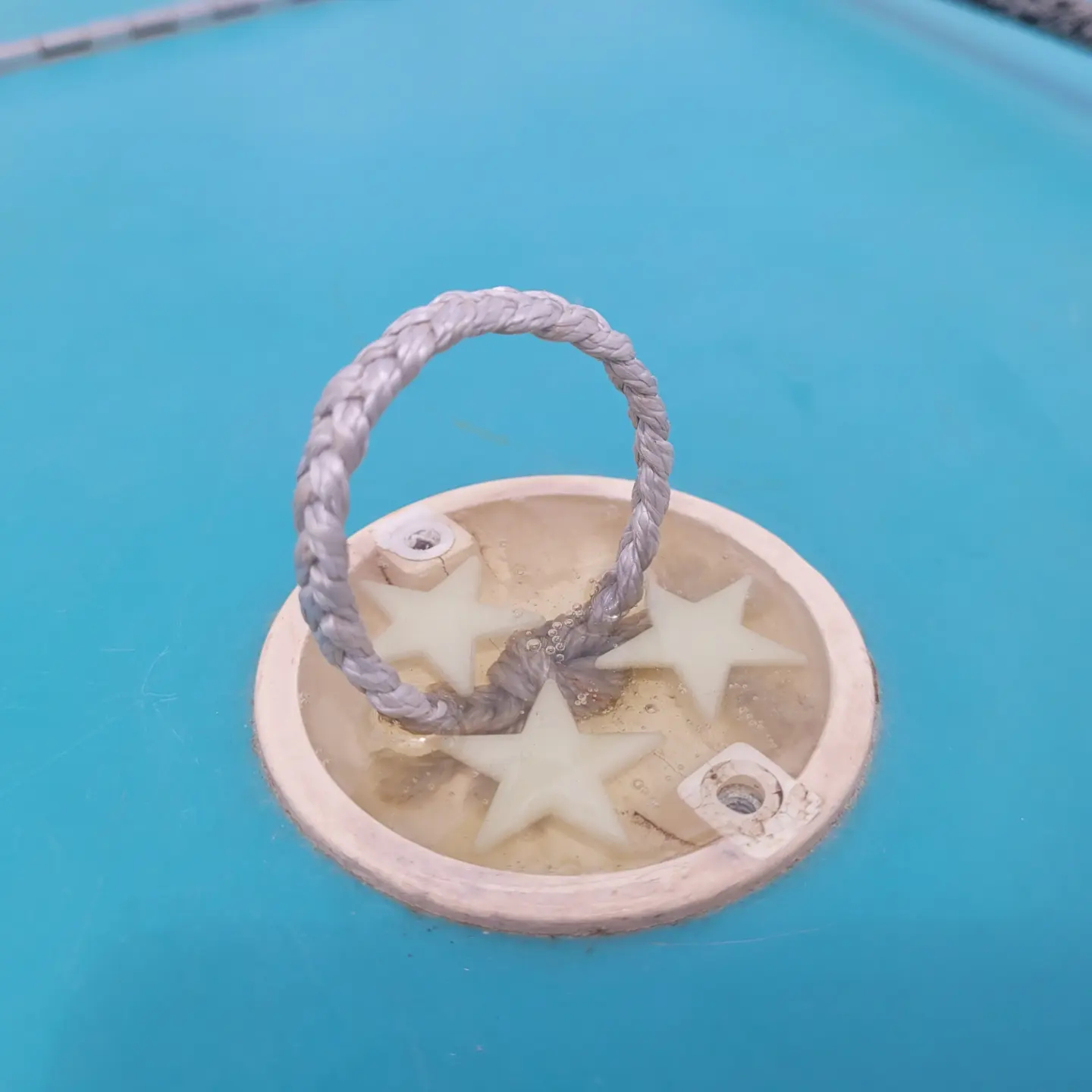
 By
By 